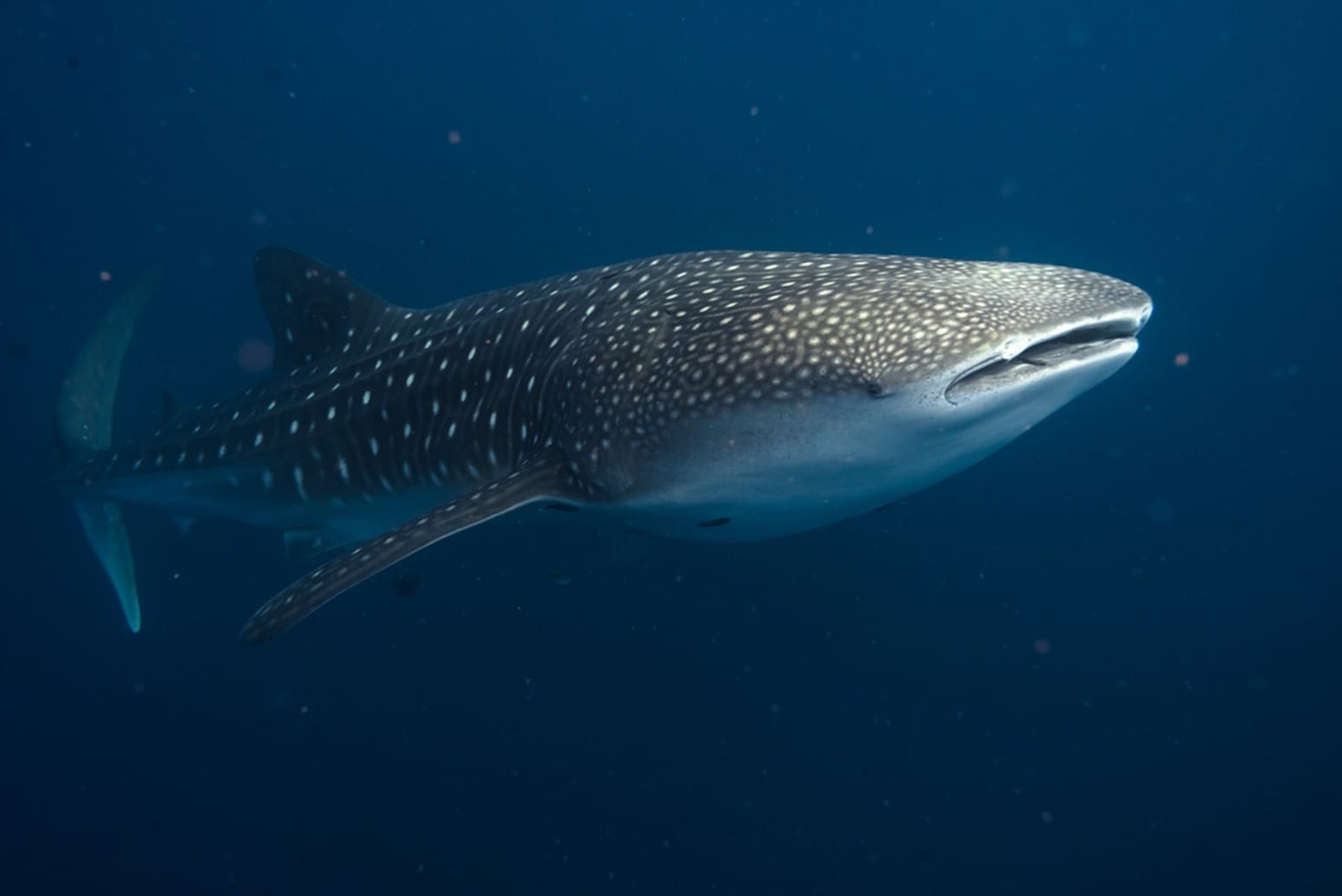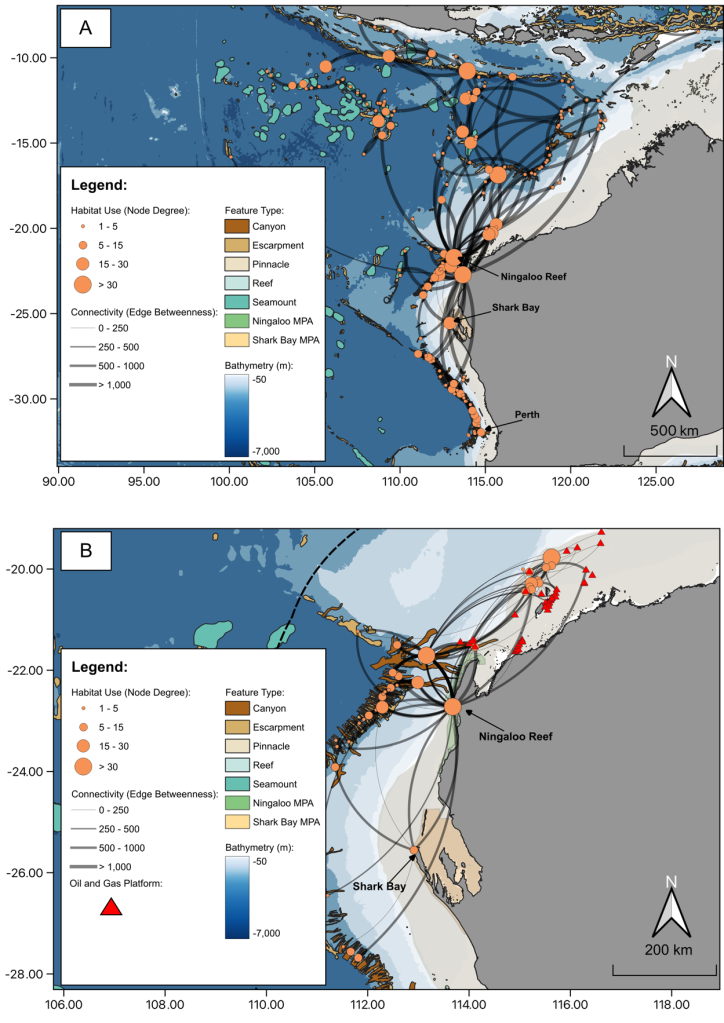Hot off the press: Natural and artificial seafloor structures influence whale shark movement
Sequeira Lab PhD candidate Ben D'Antonio has just publisehd his second PhD chapter on whale sharks and the influence of natural and artificial structures on their movements!

Sequeira Lab PhD candidate Ben D’Antonio celebrates the publication of his second PhD chapter!
Ben led the research paper “Natural and Artificial Structures Influence the Movement and Habitat Connectivity of Whale Sharks (Rhincodon typus) Across Seascapes” which has just been published in the journal Diversity and Distributions. In this paper, Ben applied graph theory to 78 whale shark satellite tracks to quantify how both natural (e.g. seamounts, canyons, pinnacles, etc) and artificial (e.g. infrastructure for oil and gas) structures influence the movement patterns across regional (100’s km) and broad (1000’s km) spatial scales.
The results showed that natural seafloor features promote habitat use and connectivity for whale sharks across oceanic and coastal seascapes. Whale sharks' attraction to these features is likely associated with foraging, as seamounts, canyons and pinnacles are known to enhance productivity. The study also found that whale sharks routinely visited oil and gas platforms, used as "stepping-stones" that enhanced habitat connectivity. These results highlight the importance of considering the influence of existing features and structures for the conservation of whale sharks, particularly for environmental impact assessments associated with operation and decommissioning phases of oil and gas platforms.
The paper is co-authored by a team of researchers from the UWA Oceans Institute, Australian Institute of Marine Science, the Australian National University, the University of Queensland and ECOCEAN.
Congratulations to Ben for this great achievement and many thanks to the team for their support!

